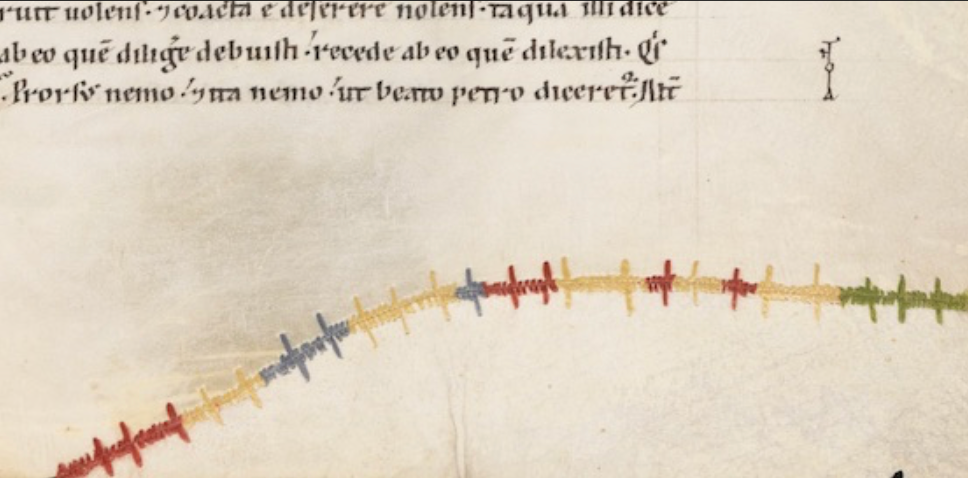
An early form of needle lace: 12th century parchment repairs in the Engelberg monastery, Switzerland
While writing the medieval section of the Bloomsbury World Encyclopedia of Embroidery, vol. 4, Scandinavian and Western European Embroidery, I came across an article by Christine Sciacca (2010), ‘Stitches, sutures, and seams: “Embroidered” parchment repairs in medieval manuscripts’, in: (eds) Robin Nethertong and Gale R. Owen-Crocker, Medieval Clothing and Textiles, Vol. 6, Woodbridge: the Boydell Press, pp. 57- 92.
In her study, Sciacca refers to mended manuscripts associated with the Engelberg monastery, a Benedictine foundation in central Switzerland. Among the items in the Engelberg Stiftsbibliothekare a number of medieval manuscripts made out of parchment sheets (animal skins from goats or sheep). Before being used the skins have to be prepared and repaired. It is the technique of preparing and repairing the sheets for the Engelberg codices that drew my attention.
Want to read more of this article?
We are proud to be a subscriber-funded publication with members in 185 countries. We know our readership is passionate about textiles, so we invite you to help us preserve and promote the stories, memories, and histories that fabric holds. Your support allows us to publish our magazine, and also ‘what's on’ information, and subscription interviews, reviews, and long-read articles in our online blog.

